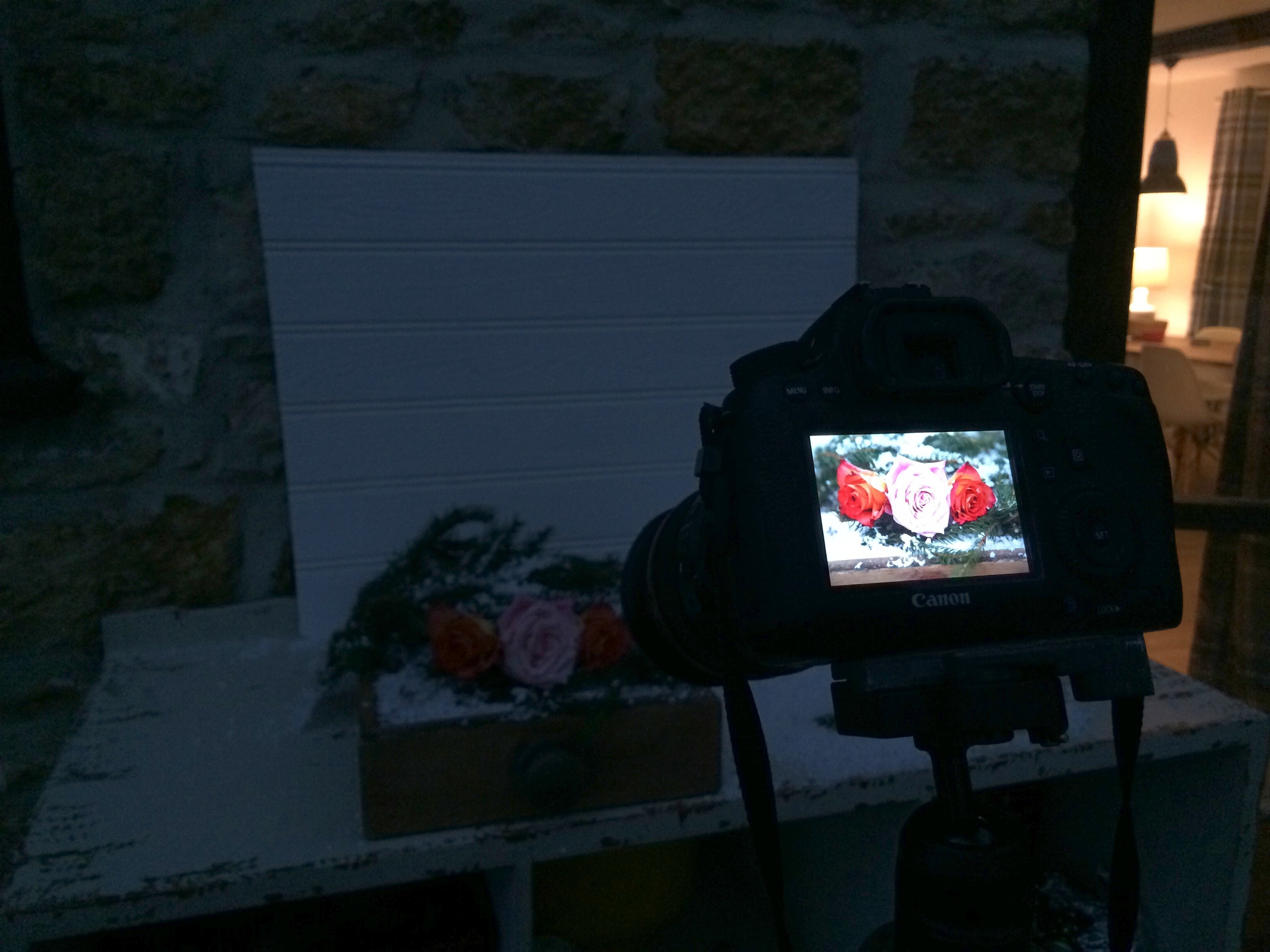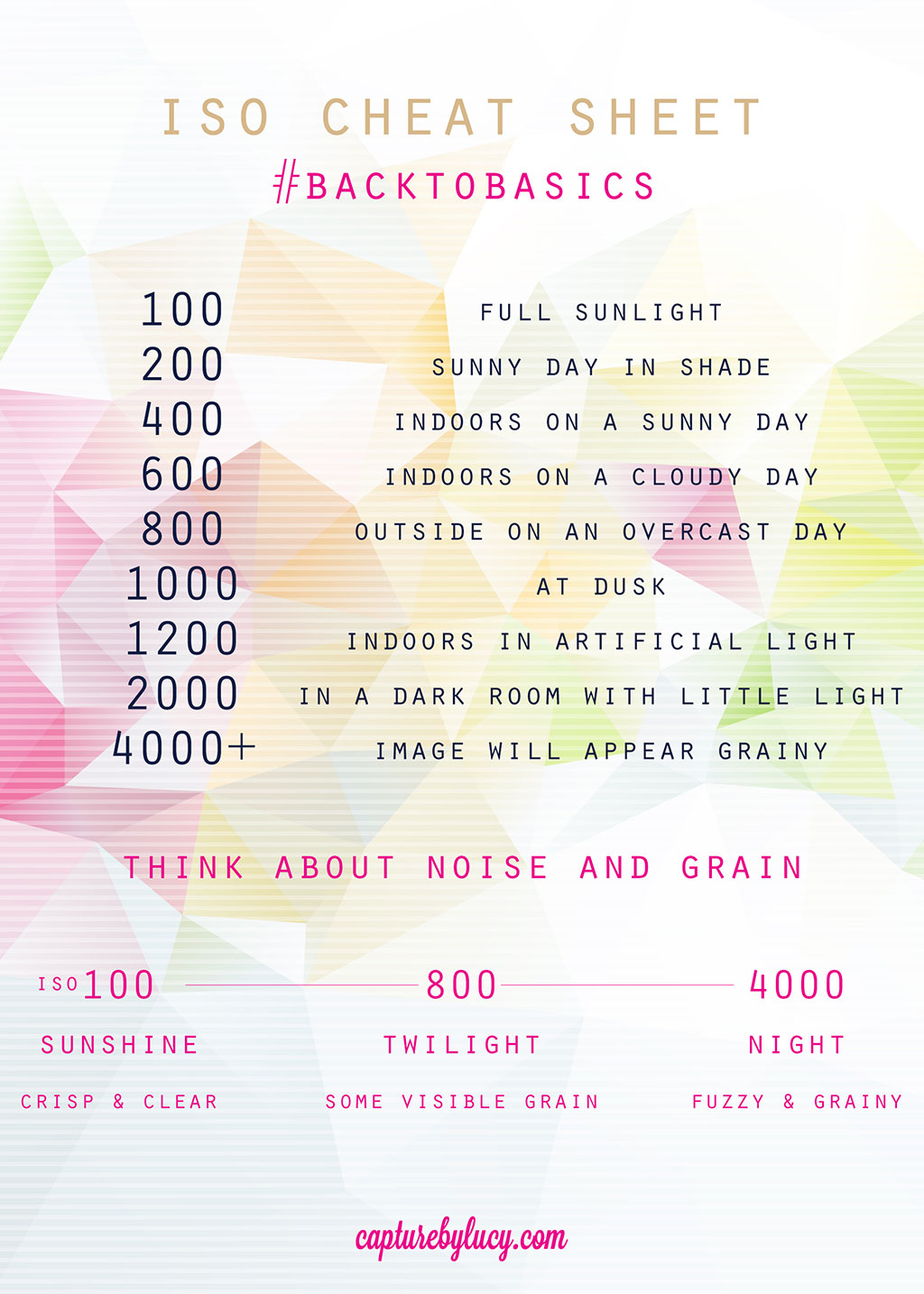What is ISO? Photography Tutorial #BACKTOBASICS
Hooray time to get #backtobasics again.
You might want a refresh and read What is Aperture? and What is Shutter Speed? before you read on, as it will help you to understand the three main principles of photography. Once you have grasped them, it will feel like a weight has lifted and I guarantee you will feel less scared of the DSLR in your hands! At least that's how I felt!
ISO (Pronounced as in the letters I.S.O.) is your camera sensor's sensitivity to light. So the lower the ISO number the less sensitive your camera is to the light available. The higher the number the more sensitive.
When you are capturing images in bright light, like on a sunny day outside, you would use a lower ISO number but for darker, low light conditions, you would want to increase your ISO to enable you to take photographs without a flash.
BUT, you will notice that as you increase the ISO number, your image will appear more grainy or fuzzy. This is called noise.
Sometimes I like a bit of noise. It can add atmosphere, a rugged texture and really suits a more earthy photograph, but generally, you want to avoid noise and grain if you can.
Different DSLRs will have different ISO scales. Each will have a Base ISO. This is the lowest ISO setting. On my Canon 6D, I can adjust my ISO from 100 to 25600, which means that I can shoot well past dusk and just about get away with a "rustic" image!
I work in natural light and being able to crank my ISO setting is a great benefit in the darker, grey Winter days.
Think about ISO numbers as a scale low to high. As you double the ISO, the sensitivity to the light doubles and the speed at which you take the photos doubles.
So, an ISO 200 setting will be twice as sensitive to the light around you as an ISO setting of 100.
An ISO setting of 100 will take 1 second to capture, when you double the ISO setting to 200, it takes 1/2 a second to capture the same image.
So think about shooting a moving object like your child running in the garden. You might want to increase your ISO to say 800, to take the image at 1/8th of a second. However, the trade off is that by increasing your ISO number, you increase your camera's sensitivity to the light and could end up with a whited out, or over exposed image. You know, when people's skin looks like a ghost! It's a trade off, to capture the moving object in focus, in the best light conditions.
Here is a cheat sheet for you to help with different light situations you may shoot in.
I set up this photo of the Wintry roses at 4.30pm on a dreary December day. I used a tripod and as I lost the light I snapped the same image using different ISO settings to show you the impact of increasing your ISO number.
FIRST ISO 100 - The first has very limited noise in the background, the centre of the pink rose is crisp.
SECOND ISO 1600 - To compensate for the fading natural light I increased the ISO but the orange roses become more grainy, although the image is still sharp enough to print.
THIRD ISO 25600 - Even at the highest possible setting on my camera the grain engulfs the image. Definition and detail is lost and the picture appears fuzzy and unusable even online at low res.
It's an extreme example but try setting up your own mini shoot at dusk and see how your settings affect the picture quality. Remember, what may look sharp on your display screen may look quite grainy on your computer screen.
Photography is all about balance. It's about balancing the three principles that effect exposure. Aperture, Shutter Speed and ISO.
I like to think of the three, like the three legs of a tripod. So if you change one you have to adjust the others to balance each other out.
The best thing to do is play! Play and practise and challenge yourself.
I will be shooting a recipe book this Summer and have been taking myself off for an hour here and there to practise in low light conditions and playing with different lights.
Improving your photography is a never ending process. So go and get snapping and enjoy seeing your pictures improve.
Next up is composition and we can start playing with props!





